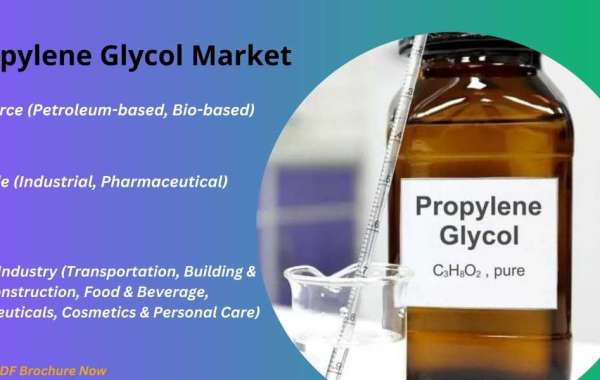Propylene Glycol Market by Source (Petroleum-based, Bio-based), Grade (Industrial, Pharmaceutical), End-use Industry (Transportation, Building Construction, Food Beverage, Pharmaceuticals, Cosmetics Personal Care), Region. The global propylene glycol market is projected to reach USD 4.7 billion by 2024, at a CAGR of 4.4% from USD 3.8 billion in 2019. Contracts agreements and expansions are the strategies adopted by the key players to strengthen their positions in the global propylene glycol market. The maximum number of strategic developments undertaken between 2012 and 2016 took place in North America, followed by Europe and South America. The market research report offers insights into the current propylene glycol market size, competitive landscape, drivers, trends, opportunities, and restraints that are impacting the growth of the market.
Based on source, bio-based propylene glycol is expected to be the fastest-growing segment during the forecast period. Bio-based propylene glycol is used in various application areas, such as pharmaceuticals cosmetics, antifreeze functional fluids, unsaturated polyester resin, and others.
By application, the food, pharmaceuticals cosmetics segment is expected to witness high growth from 2016 to 2021. Increased health consciousness and improving lifestyle of people are fueling the growth of this segment. In addition, consumer’s preference for expensive cosmetic products is driving the growth of food, pharmaceuticals cosmetics application.
Get an Exclusive PDF Sample Copy of This Report at https://www.marketsandmarkets.com/pdfdownloadNew.asp?id=264488864
The key players operating in the global propylene glycol market are The Dow Chemical Company (U.S.), LyondellBasell Industries N.V. (Netherlands), BASF SE (Germany), Archer Daniels Midland Company (U.S.), Global Bio-chem Technology Group Co., Ltd. (China), DuPont Tate Lyle Bio Products Company, LLC (U.S.), Huntsman Corporation (U.S.), SKC Co., Ltd. (South Korea), Temix International S.R.L. (Italy), and Ineos Oxide (Switzerland).
DuPont Tate Lyle Bio Products LLC (U.S.) is a key player in the global propylene glycol market. The company has been focusing on expansions and contracts agreements as a part of its strategic development activities. In January 2017, the company expanded its distribution of Zemea propanediol product in the South American market. In March 2014, the company entered into a supply contract with Cheryl Lee MD, Sensitive Skin Care (U.S.). As per the agreement, the company provided Zemea propanediol to manufacture a line of personal care products such as body cream, face lotion, and anti-itch cream.
Global Bio-chem Technology Group Co., Ltd. (China) is another major manufacturer of propylene glycol, globally. The company has been focusing on contracts agreements to strengthen its market. For instance, in June 2013, the company entered into an agreement to develop a catalyst for improving the production of glycerin from carbohydrates. The agreement helped the company to produce cost-saving and efficient renewable propylene glycol.
Request Customized Report as Per Your Requirements at https://www.marketsandmarkets.com/requestCustomizationNew.asp?id=264488864
This report provides a detailed analysis of the global propylene glycol market and segments the same based on source, application, end-use industry, and region. Based on source, the propylene glycol market has been segmented into petroleum-based propylene glycol and bio-based propylene glycol. Based on application, the market has been segmented into unsaturated polyester resin, antifreeze functional fluids, food, pharmaceuticals cosmetics, liquid detergents, plasticizers, and others. Based on end-use industry, the market has been segmented into transportation, building construction, pharmaceuticals cosmetics, food beverage, and others. Based on region, the market has been segmented into the Asia-Pacific region, Europe, North America, South America, and the Middle East Africa.
TABLE OF CONTENTS
1 INTRODUCTION (Page No. - 18)
1.1 OBJECTIVES OF THE STUDY
1.2 MARKET DEFINITION
1.3 SCOPE OF THE STUDY
1.3.1 PROPYLENE GLYCOL: MARKET SEGMENTATION
1.3.2 REGIONS COVERED
1.3.3 YEARS CONSIDERED FOR THE STUDY
1.4 CURRENCY
1.5 UNIT CONSIDERED
1.6 LIMITATIONS
1.7 STAKEHOLDERS
2 RESEARCH METHODOLOGY (Page No. - 22)
2.1 BASE NUMBER CALCULATION
2.1.1 PRIMARY AND SECONDARY RESEARCH
2.1.2 MARKET SIZE CALCULATION BY END-USE INDUSTRY
2.1.3 MARKET SIZE CALCULATION BY SOURCE
2.2 FORECAST NUMBER CALCULATION
2.3 MARKET ENGINEERING PROCESS
2.3.1 BOTTOM-UP APPROACH
FIGURE 1 PROPYLENE GLYCOL MARKET: BOTTOM-UP APPROACH
2.3.2 TOP-DOWN APPROACH
FIGURE 2 PROPYLENE GLYCOL MARKET: TOP-DOWN APPROACH
2.4 ASSUMPTIONS
2.5 SECONDARY DATA
2.6 PRIMARY DATA
2.6.1 BREAKDOWN OF PRIMARY INTERVIEWS
2.6.2 KEY INDUSTRY INSIGHTS
Continued...














